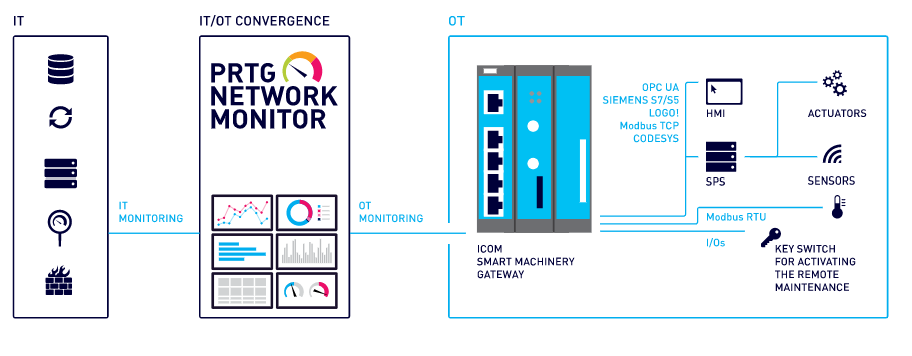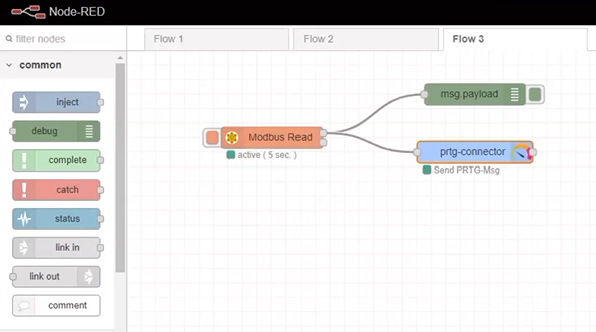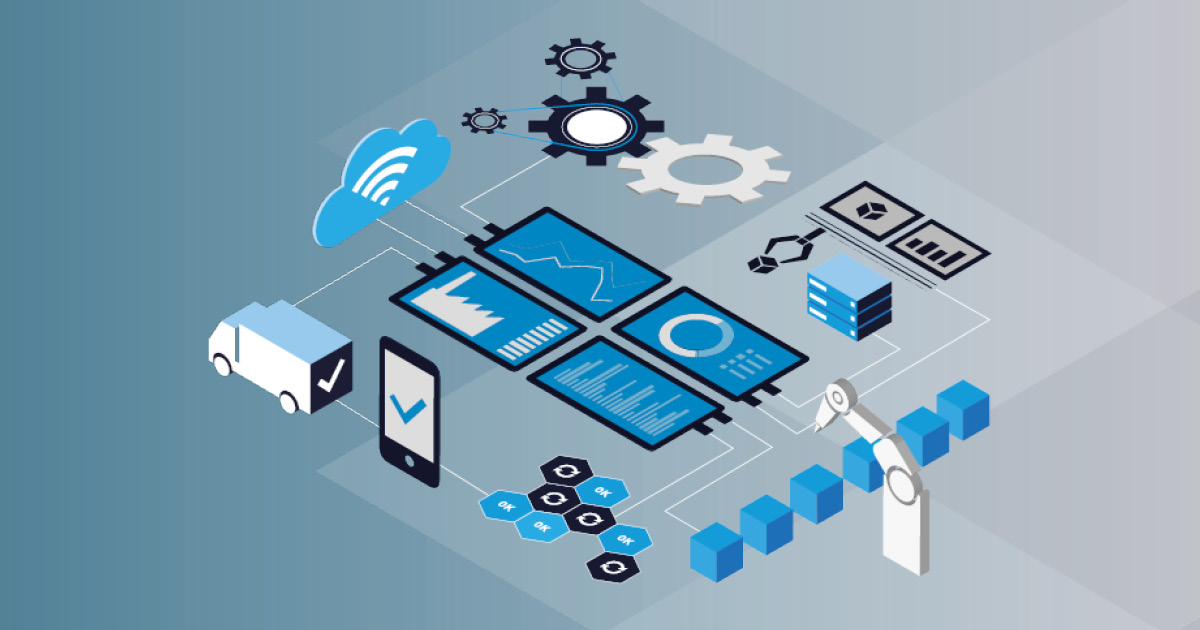Recently, I wrote about monitoring industrial IT convergence, where the worlds of classic Information Technology (IT), Operational Technology (OT) and Industrial Internet of Things (IIoT) are merging together. The whole point of the article was the importance of having a complete overview of everything in one place. Now, I want to go into a few examples of just what bringing IT, OT and the IIoT together might look like with PRTG Network Monitor.
PRTG is well known within the IT world for monitoring...well...IT. But for quite a while, its capabilities have been expanding beyond the world of traditional IT. And if you already use PRTG to monitor IT for a company in the manufacturing sector, here are three ways you can start bringing some aspects of the OT and IIoT infrastructure into your monitoring concept.
iWhat is IIoT?
IIoT stands for the Industrial Internet of Things and refers to a network of connected devices in the industrial sector. It is a subset of the Internet of Things (IoT). The defining characteristic of connected devices on IIoT networks is that they transfer data without human-to-human or human-to-computer interaction. Connected devices communicate through gateways, which are physical servers that filter data, and transmit it to other devices and software applications. Read more
1. Edge gateways and MQTT
Smart edge gateways are important elements of industrial IT. They are the bridge between the traditional OT shop floor and IT systems like data centers or the cloud. Of course, ensuring that these devices themselves are up and running as they should be is important, and many offer SNMP support or an API. This means that you can bring in basic information about the gateway into PRTG, like its availability, and other metrics that indicate its health.
Looking ahead, bringing OT metrics into the unified monitoring concept could be done by getting them from the device via a smart gateway. Here's what this might look like, using the example of the INSYS icom Smart Machinery Gateway:

Because the INSYS icom Smart Machinery Gateway uses MQTT (among other means) to communicate data upstream (for example, to a data collection system or the cloud), PRTG could subscribe to these messages using the new MQTT Subscribe sensor. For more information on the MQTT sensors in PRTG, take a look the announcement blog post. We'll also have an example of the INSYS icom use case, so make sure you subscribe to our newsletter!
2. Node-RED
To get data from machines and other devices that PRTG historically doesn't have access to, there is another option: Node-RED. We introduced the PRTG Node-RED connector earlier this year, which gives you even more options for getting data into PRTG. Here's a brief overview of how it works:
Using Node-RED, you can send data pulled from a work floor machine to the PRTG Node-RED connector. With this connector, you specify the target to send the data to, such as an HTTP Push Data Advanced sensor or HTTP IoT Push Data Advanced sensor that you configure in PRTG.
As an example: let's say you have a PLC that sends data using the Modbus fieldbus protocol. In Node-RED, you would use the Modbus Read node to get the data from the PLC. Then you can process and send the information to the PRTG connector, and finally route it to an HTTP Push Data Advanced sensor in PRTG Network Monitor.

3. Metrics from IoT/IIoT sensors
The prevalence of connected and smart devices in a factory setting has been on the rise, as digitalization is a key driver for retrofitting existing machines in the brownfield to make them ready for Industry 4.0. IIoT sensors are also used to monitor environmental factors like temperature and humidity, they're implemented to facilitate smart automation and more. Facility management is still another area that has adopted the use of sensors to help manage aspects like power consumption and even air flow.
Bringing these metrics into PRTG allows you to monitor these environmental metrics as part of your overall monitoring, giving you a clearer picture of your environment. For example: rising temperatures could indicate a problem with the HVAC system, or increased humidity could pose a risk to certain machinery. Knowing these values helps you make decisions about other aspects of your infrastructure, and often even facilitates proactive steps — before a failure occurs.
PRTG and industrial IT
As you can see, there are already some steps you can take to start getting a holistic view of your industrial infrastructure. But this is just the beginning! We are currently focusing on features and functionality that will benefit industrial IT.
As I mentioned earlier, we have dedicated MQTT sensors already available, with more on the way. We are planning a Modbus TCP sensor (please take our survey). We are also working on OPC UA support, with several sensors to come: OPC UA sensor, Beckhoff IPC sensor, and the OPC UA Custom sensor (please take our survey). Stay tuned to our blog and website for more exciting industrial IT announcements in the coming months!
Do you use PRTG in an industrial setting? Let us know your experiences in the comments below!
 Published by
Published by 












